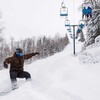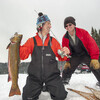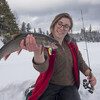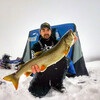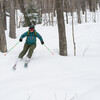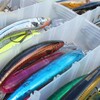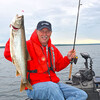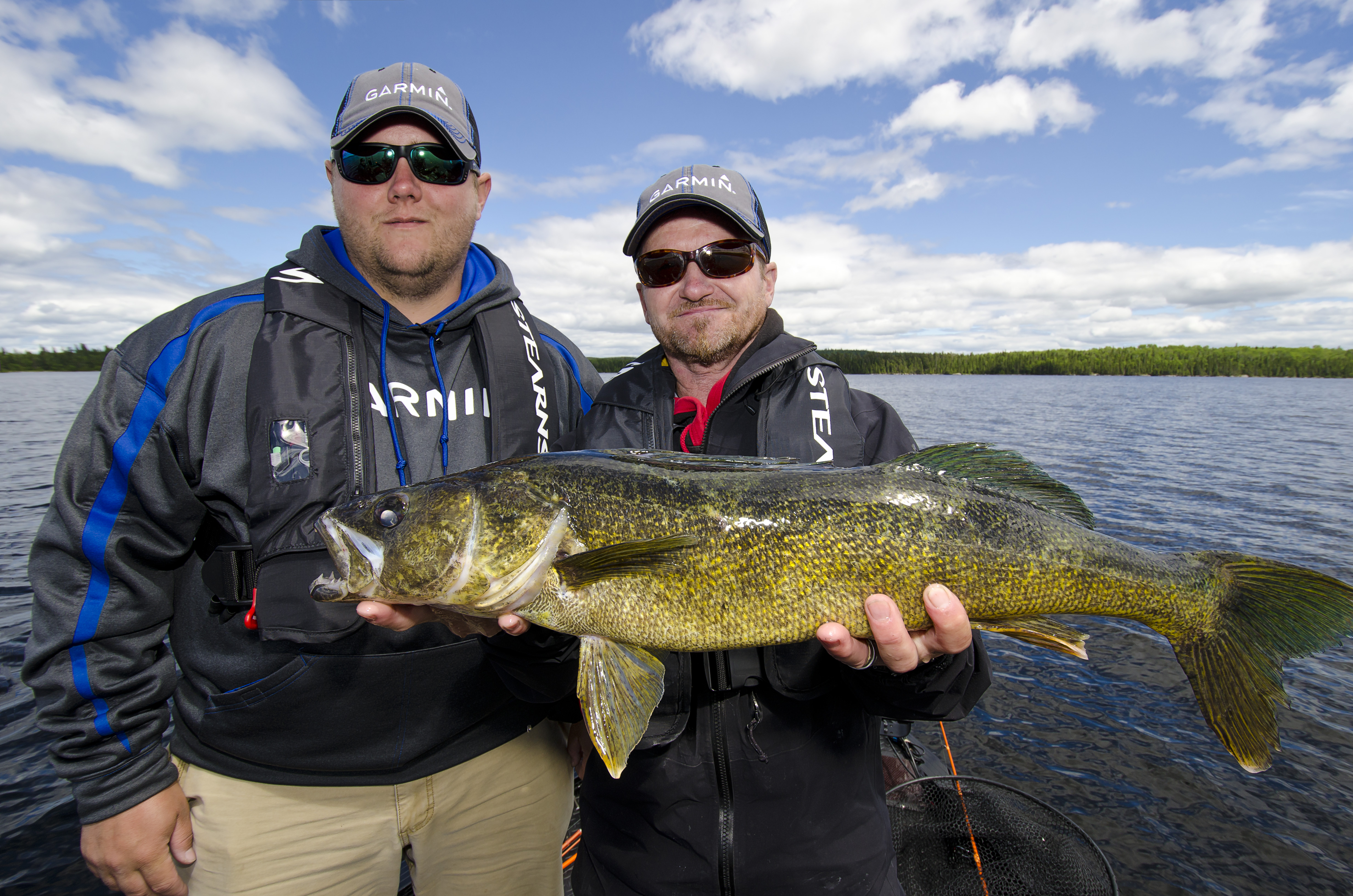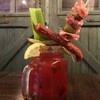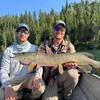
The Cold Water Challenge
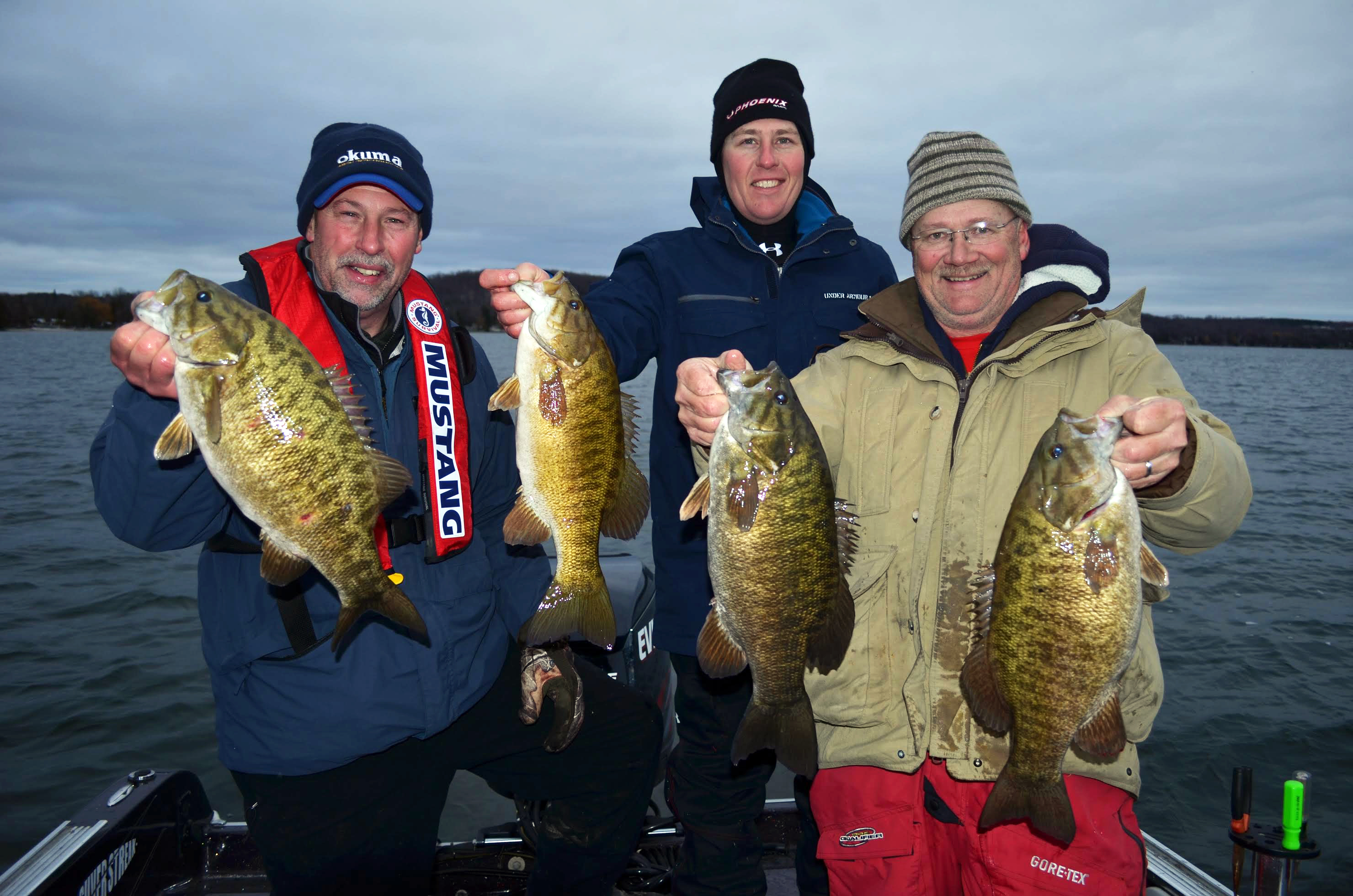
Biologists categorize smallmouth bass as a warm water species. Despite this designation, smallmouth remain active and feed often late into the fall when the water is anything but warm.
Catching these fish in cool to downright cold water conditions is about understanding how the metabolism and activity level of the smallmouth bass slows down in the fall. Like all fish, smallmouth are cold-blooded creatures, but smallmouth more so than walleye and pike start to get noticeably lethargic about the time the leaves have fallen and the first snow showers of the season threaten.
As water temperatures drop and smallmouth activity levels start to decline in the fall, this species typically moves to deeper water where they spend the winter months. Water depths from 20 to 40 feet or more start to accumulate the biggest concentrations of fish.
It’s important to note that smallmouth may not feed as aggressively or as often in late fall, but they can still be caught with select presentations. Because these fish are found in deep water, locating them with the help of sonar is the most practical place to start our discussion. In deep water, the sonar transducer cone covers a larger area on the bottom, in turn making it easier to locate fish.
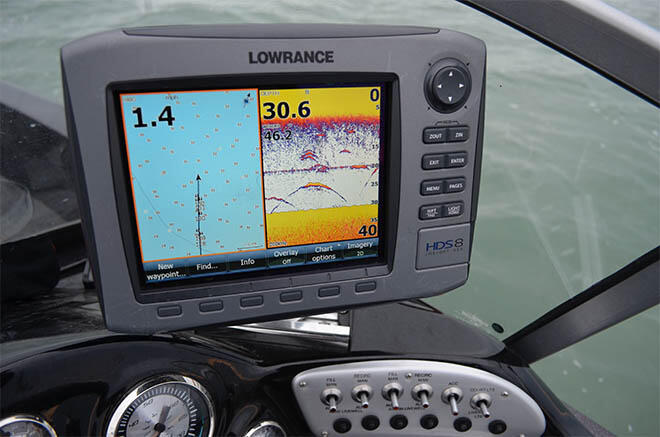
Also, smallmouth tend to be found in dense pods, often numbering in the hundreds of individual fish on key spots. These key spots tend to be places where a deep water sanctuary and a shallower water food shelf come together. Weed beds that taper quickly into deep water, rapidly sloping shoreline breaks and sunken islands surrounded by deeper water are some of the common places where fall smallmouth can be found.
Camp On Their Heads
Because fall smallmouth favour deep water, anglers have the advantage of being able to find them with sonar and then position the boat literally over top of these fish. In the fall, it’s common to literally mark an individual fish and then drop down and catch that specific fish! Jigging and drop-shotting are the two most popular ways to target fall smallmouth. Scented soft plastics are the most popular dressings for these presentations, with curl-tail grubs and crayfish imitations being among the most productive.
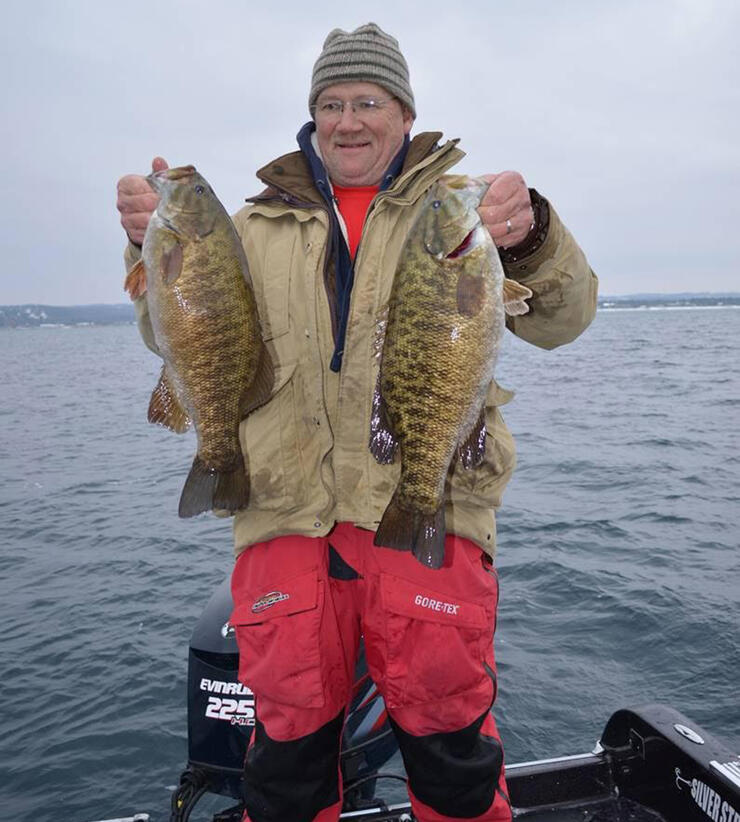
Old-school anglers will find that substituting a live minnow for the soft plastic is also amazingly effective on lethargic smallmouth. Introducing a third presentation -- slip sinker rigging -- is yet another way to tempt smallmouth in deep water. Simply using the electric motor to slowly drag a rig baited with a live shiner, sucker or dace minnow dredges up smallmouth even in ice-cold water.
Hard Baits
Because the water is cold and the fish are exceptionally lethargic, most traditional bass baits like crankbaits and spinnerbaits simply don’t produce in cold water. One hard bait will, however, catch fall bass consistently. The blade bait is little more than a chunk of brass with some lead molded onto the bottom. When pulled, these baits vibrate rapidly, sending distinctive pulsations up the fishing line.
Catching fish on blade baits is a matter of fishing them slowly so as to literally scoot the bait along the bottom by pulling the rod tip from the 10 o'clock to the 11 o'clock position. This subtle movement scoots the blade bait along the bottom, kicking up sediment and sending out the vibration these baits are best known for.
Working the bait too fast is the most common mistake. In icy cold water, a blade bait must be fished painstakingly slowly. Start by casting a half-ounce blade bait and allowing it to sink to the bottom on a slack line. Reel up the slack until the weight of the lure can be felt in the rod tip, and then lift the rod in a slow and steady motion. This subtle pulling of the rod tip causes the blade bait to scuttle along the bottom like a crayfish.
Blade bait fishing can be accomplished with both spinning and baitcasting gear. My favourite spinning rod for blading up smallmouth is an Okuma EVx drop-shotting model, the EVx-S-6101L. This rod has a very soft tip, ideal for fishing not only blade baits but soft plastics as well. A size 30 RTX spinning reel loaded with 10-pound test fluorocarbon line completes this combo
A good baitcasting outfit for fishing jigs, rigs and blade baits is the Okuma C3x-C-701ML. Lighter in action than most baitcasting rods, this C3 model is the most sensitive model in the Okuma lineup. Matched up with a super-light Helios Air baitcasting reel and 10-pound test fluorocarbon line, this combination is ideal for cold water bass fishing applications.
Recommended Articles

The Group of Seven in Algoma

9 Facts to Know about the Agawa Canyon Tour Train


